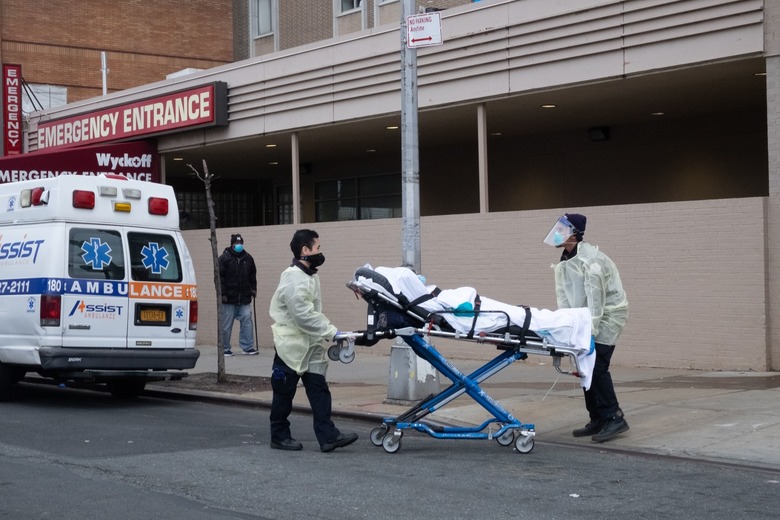Doctors Tore Apart The Controversial Study That Says Coronavirus Is Man-Made
- A recent study promoted by a former director of MI6 claimed that the coronavirus pandemic's real origin is a Wuhan lab, but virologists say the research is flawed and misleading.
- Experts have categorically opposed the premise that the virus was created by man, saying that all available evidence indicates the virus evolved from animals naturally before jumping to humans.
- The controversial study claimed that none of the current vaccines will work against the virus, aside from one made by a company that was involved in the research. However, several vaccine candidates already proved they can neutralize the virus.
One of the worst side effects of the novel coronavirus pandemic is the emergence of COVID-19 myths and conspiracy theories that spread like wildfire on social media. Some of these tidbits detail unverified therapies, like bleach. Others falsely link 5G connectivity with the spread of coronavirus infections. The worst ones concern the emergence of the virus, promoting conspiracy theories that say the virus was engineered in a lab or that it escaped from a Wuhan research facility. There are even crazy conspiracy theories that combine other unproven theories. The fact that China is still unwilling or unable to explain when the pandemic actually started further fuels such theories.
Scientists widely agree that the new virus appeared naturally, as the pathogen evolved in animals until it was able to infect the first human host. The intelligence community agrees with this take. But we have at least one major exception from both fields. A former MI6 director said a few days ago that he believes a study from Norwegian and British researchers claiming that SARS-CoV-2 was created in a Chinese lab. We've already pointed out the various problems with these claims in our previous coverage. Now, it turns out that virologists who looked at the research have already debunked it.
To recap, British researchers from St. George's University of London worked with Norwegian Biotech company Immunor AS on a paper that has been widely circulated behind closed doors. Scientific journals rejected the initial version of the paper that accused China of creating the disease, and only a watered-down version of the study exists. That research claims the virus contains sequences that haven't evolved naturally, explaining that most vaccine candidates out there will not take those genetic changes into account, so they won't work. A second study also supposedly exists, but that one still hasn't been accepted for publication in any journals.
Unsurprisingly, the study goes on to claim that Immunor's vaccine candidate acts on those sequences, so it's the only vaccine candidate that will work. Several vaccine candidates have already proved their safety and effectiveness against the novel coronavirus, which contradicts the British/Norwegian study.
Several scientists have gone on record with ABC News to call out the British/Norwegian study for offering a false picture of events. "The paper is nonsense," professor of virology at Columbia University Vincent Racaniello said. "The manuscript is replete with incorrect science."
He continued, "It is absolutely 100% impossible that SARS-CoV-2 was made in a laboratory. The elements in the virus, SARS-CoV-2, all came from bat SARS-like CoVs that circulate in nature."
"No scientist or group of scientists created this virus in a laboratory. That would require insight into [viral] pathogenesis and protein engineering that does not exist," Tulane University virologist Robert Garry told the site. He added that much of the genetic material of the virus is similar to samples from animals, but it was unknown to the scientific community before the pandemic started. Therefore, it wasn't created in a lab.
Johns Hopkins Center for Health Security infectious disease expert Amesh Adalja said the genome of the novel coronavirus and its changes are ""all what you would expect from natural evolution and an animal source. There've been multiple rumors and conspiracy theories. And I do think you'll probably see more."
Other experts also warned that studies like the one that came out of St. George's University and Immunor aren't dangerous just because they spread misinformation. They also erode public trust in other scientific institutions that tell the real story. As a result, some people might avoid vaccination against COVID-19 once it's available. The anti-vaccine sentiment is already strong for the new disease. An ABC News / Washington Post poll revealed that 27% of Americans say they are unlikely to get immunized even if the vaccine is free.
What would really help clear things up is actual information about the early days of the Wuhan epidemic. But that's the kind of information China isn't ready or willing to share. The country did start to change the origin story of the virus a few weeks ago, saying COVID-19 is neither an accident nor did it emerge from a market in Wuhan, as was initially believed.
